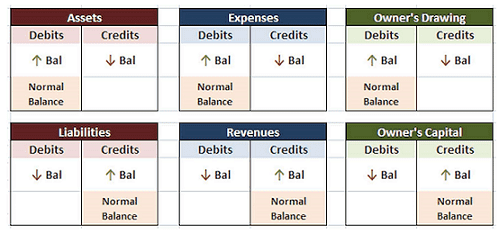Bookkeeping
A Guide to Double Declining Balance Depreciation Method

As years go by and you deduct less of the asset’s value, you’ll also be making less income from the asset—so the two balance out. If you’re brand new to the concept, open another tab and check out our complete guide to depreciation. Then come back here—you’ll have the background knowledge you need to learn about double declining balance.
Calculating the Depreciation Formula for DDB
- Through this example, we can see how the DDB method allocates a larger depreciation expense in the early years and gradually reduces it over the asset’s useful life.
- Even if the double declining method could be more appropriate for a company, i.e. its fixed assets drop off in value drastically over time, the straight-line depreciation method is far more prevalent in practice.
- And if it’s your first time filing with this method, you may want to talk to an accountant to make sure you don’t make any costly mistakes.
- The balance of the book value is eventually reduced to the asset’s salvage value after the last depreciation period.
- To use the template above, all you need to do is modify the cells in blue, and Excel will automatically generate a depreciation schedule for you.
- Simultaneously, you should accumulate the total depreciation on the balance sheet.
- This article is a must-read for anyone looking to understand and effectively apply the DDB method.
However, you can hire an accountant who can help you with the process, especially since you cannot afford to make any mistakes. The double-declining balance method depreciates or reduces the asset’s value twice as fast as the other methods. This method is more realistic as an asset’s value falls drastically with a slight change in the technological environment.
How Does the Double-Declining Balance Depreciation Method Work?
Don’t worry—these formulas are a lot easier to understand with a step-by-step example. Instead of multiplying by our fixed rate, we’ll link the end-of-period balance in Year 5 to our salvage value assumption. However, the management teams of public companies tend to be short-term oriented due to the requirement to report quarterly earnings (10-Q) and uphold their company’s share price. Since public companies are incentivized to increase double decline depreciation shareholder value (and thus, their share price), it is often in their best interests to recognize depreciation more gradually using the straight-line method. In addition, capital expenditures (Capex) consist of not only the new purchase of equipment but also the maintenance of the equipment. However, one counterargument is that it often takes time for companies to utilize the full capacity of an asset until some time has passed.
Sum-of-the-Years’ Digits Method

We empower accounting teams to work more efficiently, accurately, and collaboratively, enabling them to add greater value to their organizations’ accounting processes. Our Financial Close Software is designed to create detailed month-end close plans with specific close tasks that can be assigned to various accounting professionals, reducing the month-end close time by 30%. The workspace is connected and allows users to assign and track tasks for each close task category for input, review, and approval with the stakeholders. It allows users to extract and ingest data automatically, and use formulas on the data to process and transform it.
- By following these steps, you can accurately calculate the depreciation expense for each year of the asset’s useful life under the double declining balance method.
- The changing values can affect your business forecasting function, and you might find it challenging to come to a fair prediction.
- It also keeps the asset portion of the balance sheet from declining as rapidly, because the book value remains higher.
- HighRadius offers a cloud-based Record to Report Suite that helps accounting professionals streamline and automate the financial close process for businesses.
- In particular, companies that are publicly traded understand that investors in the market could perceive lower profitability negatively.
What is the double declining balance method of depreciation?
Certain fixed assets are most useful during their initial years and then wane in productivity over time, so the asset’s utility is consumed at a more rapid rate during the earlier phases of its useful life. Download the free Excel double declining balance template to play with the numbers and calculate double declining balance depreciation expense on your own! The best way to understand how it works is to use your own numbers and try building the schedule yourself. For example, if an asset has a salvage value of $8000 and is valued in the books at $10,000 at the start of its last accounting year. In the final year, the asset will be further depreciated by $2000, ignoring the rate of depreciation. Depreciation is an allocation of an asset’s cost over its useful life.
It reflects the asset’s reduction in value due to wear and tear, obsolescence, or age. Depreciation helps businesses match expenses with revenues generated by the asset, ensuring accurate financial reporting. The DDB method accelerates depreciation, allowing businesses to write off the cost of an asset more quickly in the early years, which can be incredibly beneficial for tax purposes and financial planning. The steps to determine the annual depreciation expense under the double declining method are as follows.
- With a book value of $73,000, there is now only $56,000 left to depreciate over seven years, or $8,000 per year.
- A double declining balance is useful for assets, such as vehicles, where there is a greater loss in value upfront.
- Using the DDB method allows the company to write off a larger portion of the car’s cost in the first few years.
- The double declining balance depreciation method is a form of accelerated depreciation that doubles the regular depreciation approach.
- Conversely, if the asset maintains its value better than expected, a switch to the straight-line method could be more appropriate in later years.
The company will have less depreciation expense, resulting in a higher net income, and higher taxes paid. This method accelerates straight-line method by doubling the straight-line rate per year. The Double Declining Balance Method (DDB) is a form of accelerated depreciation in which the annual depreciation expense is greater during the earlier stages of the fixed asset’s useful life. Through this example, we can see how the DDB method allocates a larger depreciation expense in the early years and gradually reduces it over the asset’s useful life.
By front-loading depreciation expenses, it offers the advantage of aligning with the actual wear and tear pattern of assets. This not only provides a more realistic representation of an asset’s condition but also yields tax benefits and helps companies manage risks effectively. The Straight-Line Depreciation Method allocates an equal amount of depreciation expense each year over an asset’s useful life.

Double Declining Balance Depreciation Formulas

The book value of $64,000 multiplied by 20% is $12,800 of depreciation expense for Year 3. DDB depreciation is less advantageous when a business owner wants to spread out the tax benefits of depreciation over a product’s useful life. This is preferable for businesses that may not be profitable yet and, therefore, may be unable to capitalize on greater depreciation write-offs or businesses that turn equipment assets over quickly. In contrast to straight-line depreciation, DDB depreciation is highest in the first year and then decreases over subsequent years. This makes it ideal for assets that typically lose the most value during the first years of ownership. Unlike other depreciation methods, it’s not too challenging to implement.

How Does Depreciation Affect Taxes?
Those assumptions affect both the net income and the book value of the asset. Further, they have an impact on earnings if the asset is ever sold, either for a gain or a loss when compared to its book value. The two main assumptions built into the depreciation amount are the expected useful life and the salvage value. Now, for applying the double-declining balance method, calculate the SLDP first. If you start writing off your asset early on, your tax obligation will reduce significantly.
